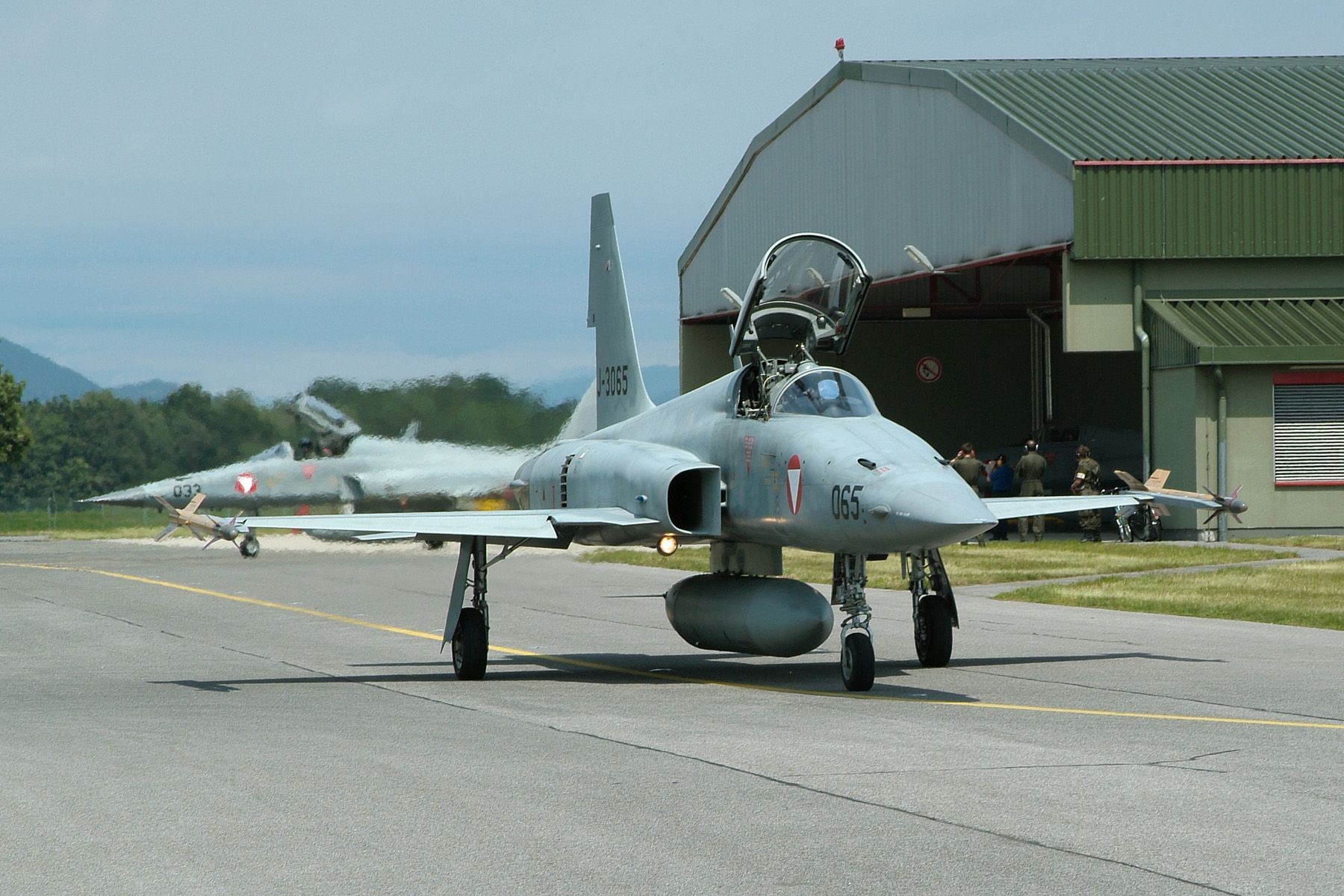Austria’s airspace is secured by the Überwachungsgeschwader (Air Surveillance Wing) of the Österreichische Luftstreitkräfte (Austrian Air Force). The area is permanently watched by various radar stations, while Eurofighters are on standby round the clock to tackle aerial threats.
Text and photos: Emiel Sloot
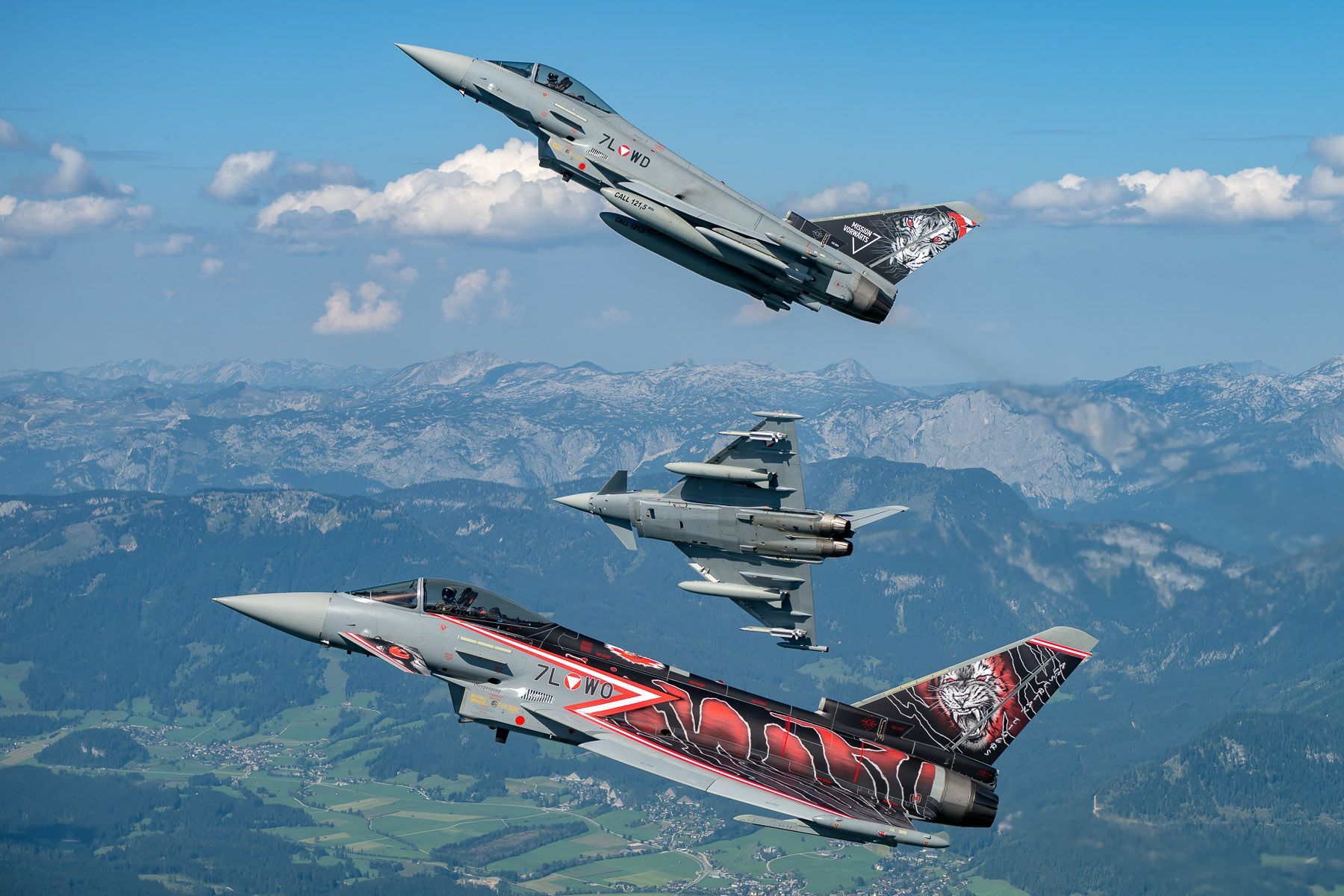
Surveillance
A key element of Austrian air defence is the so-called Goldhaube radar surveillance system. Operational since 1986, it consists of three fixed and several mobile radar units that are controlled by the Salzburg-based Radar Battalion of the air force’s Kommando Luftraumüberwachung (Airspace Surveillance Command). When the need arises, Eurofighter aircraft will be scrambled to engage the target and to lead it out of protected airspace, force it to land or to have the crew restore radio contact, the latter scenario occurring the most. According to the air force, some 30 to 50 actual alert missions are flown annually.
Fifteen Eurofighters are on strength with the two Staffel (Squadron) of the Überwachungsgeschwader, both based at Fliegerhorst Hinterstoisser near Zeltweg. Furthermore, Fliegerhorst Vogler at Linz-Hörsching is available as a forward operating location for quick reaction alert missions. The 2nd Staffel is a full member of the NATO Tiger Association since 2021.
The Eurofighters are equipped purely for air defence and are standardly fitted with a 27mm Mauser BK 27 gun. A pair of short-range IRIS-T infrared homing and thrust-vector controlled missiles can be carried to carry out the job.
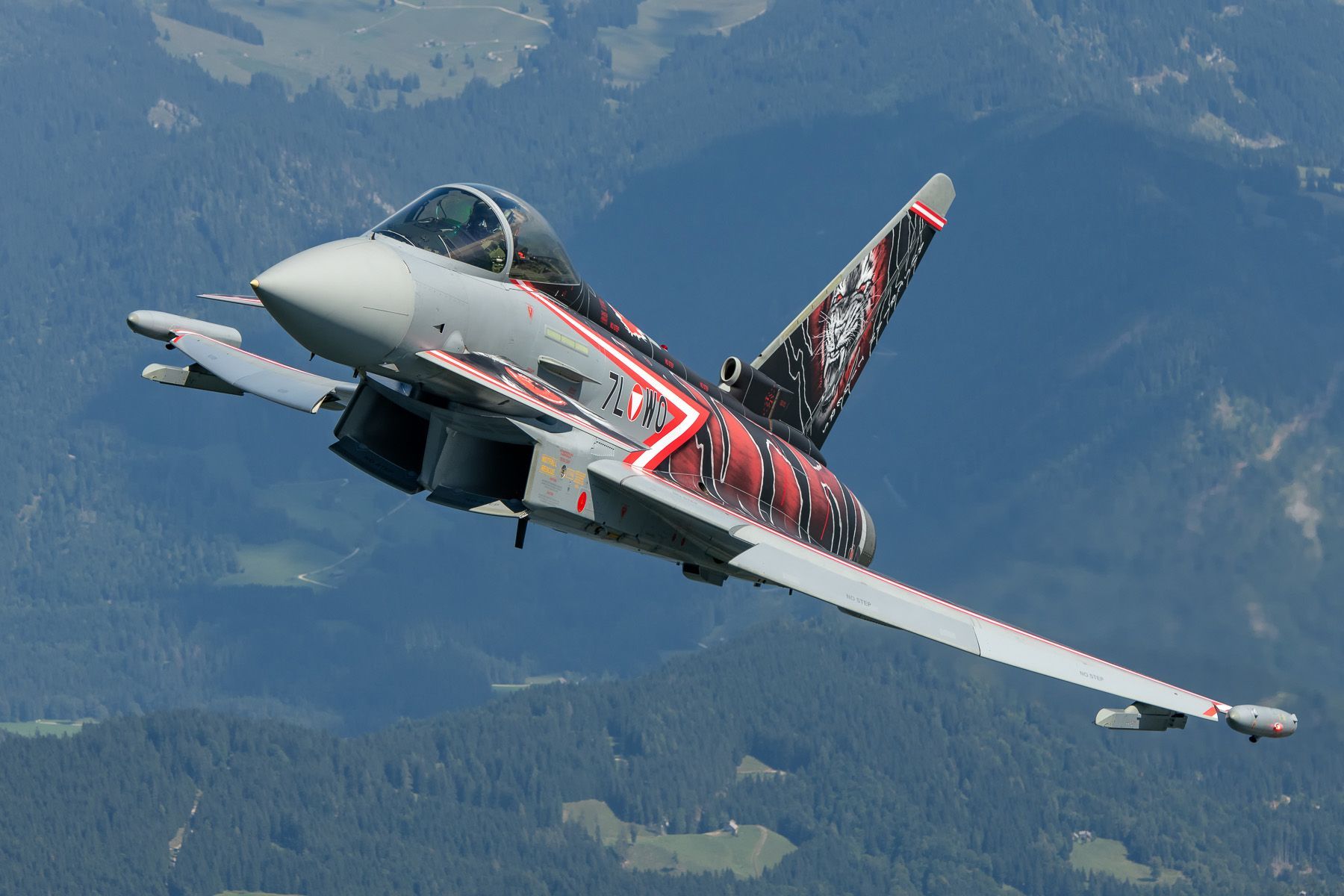
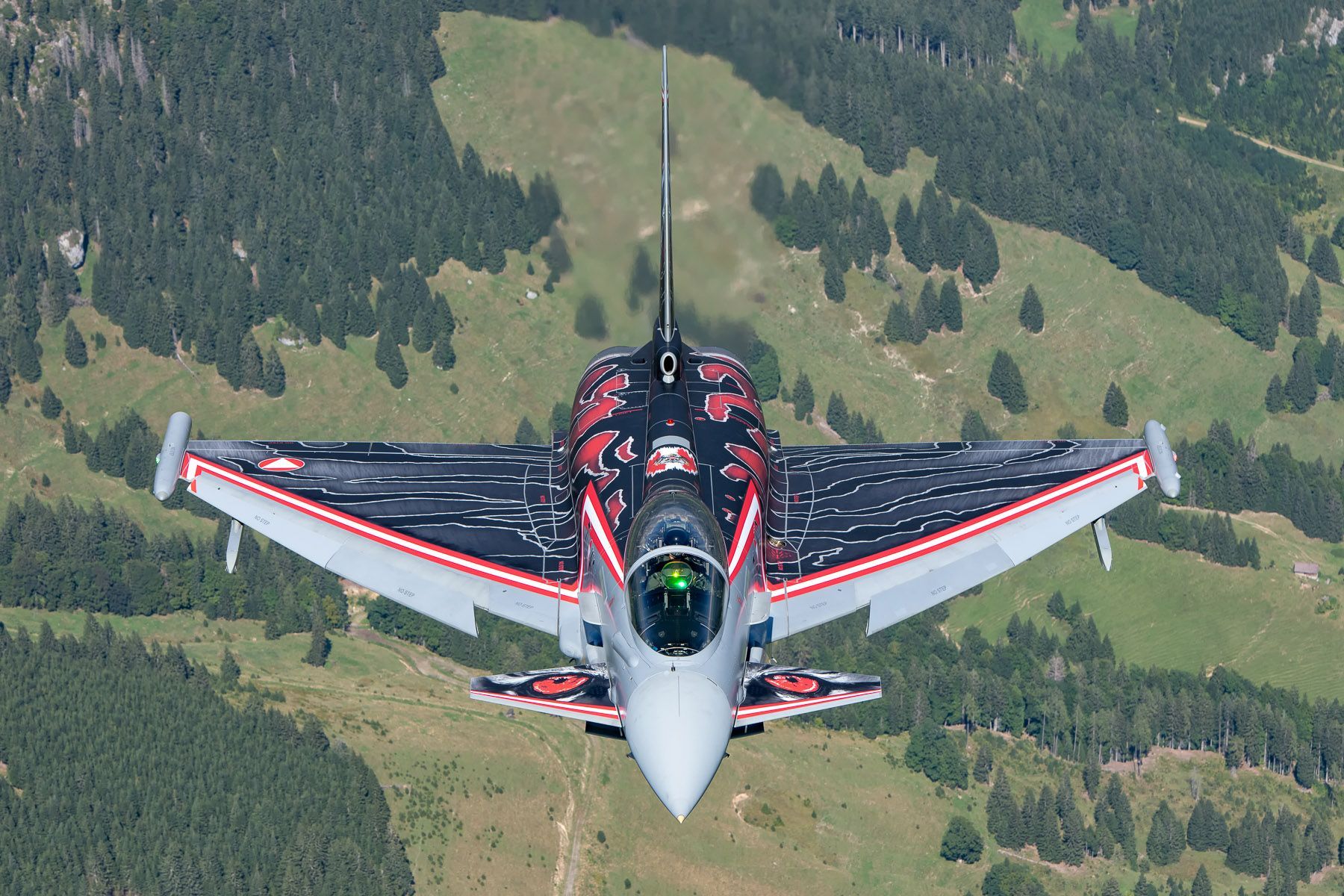
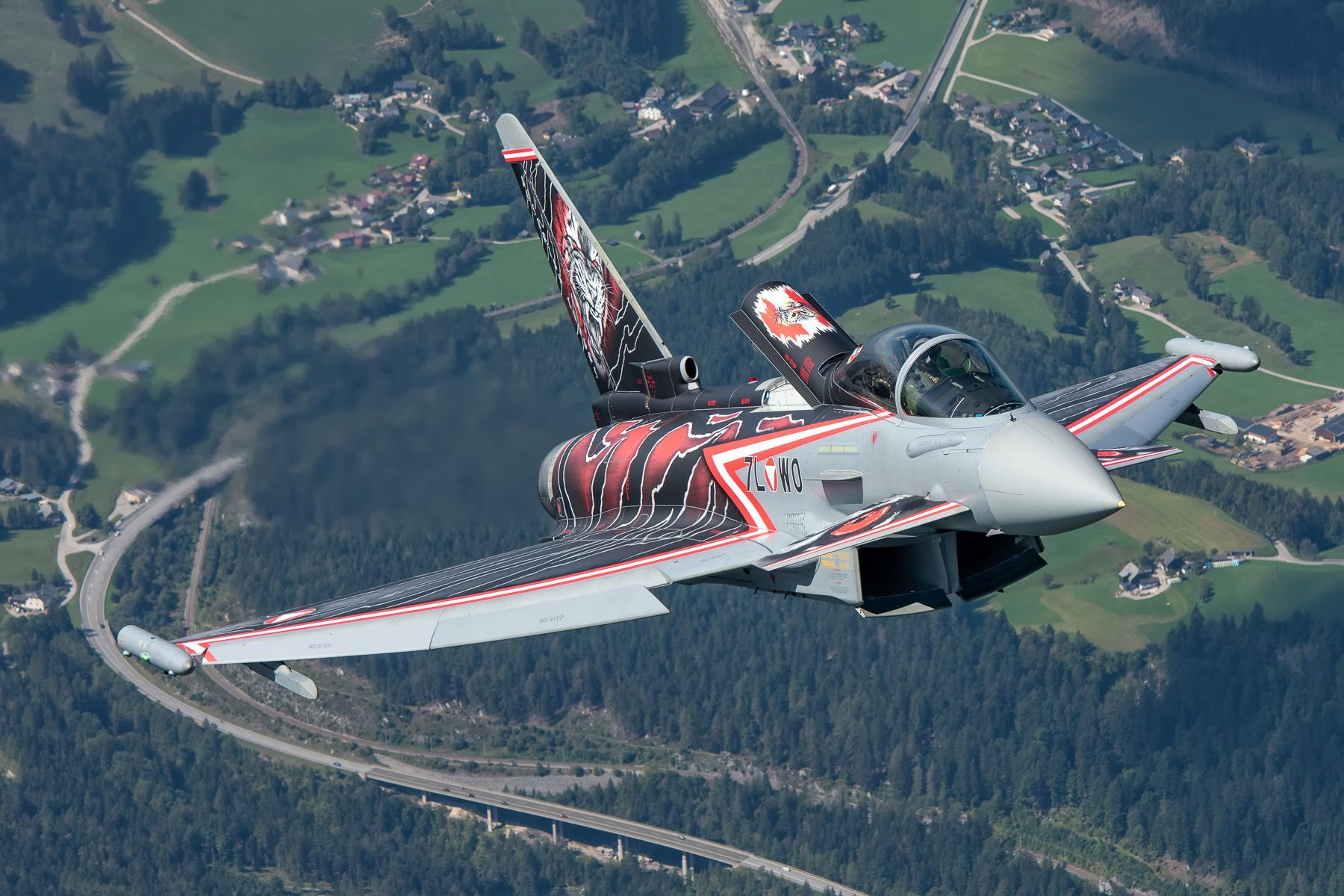
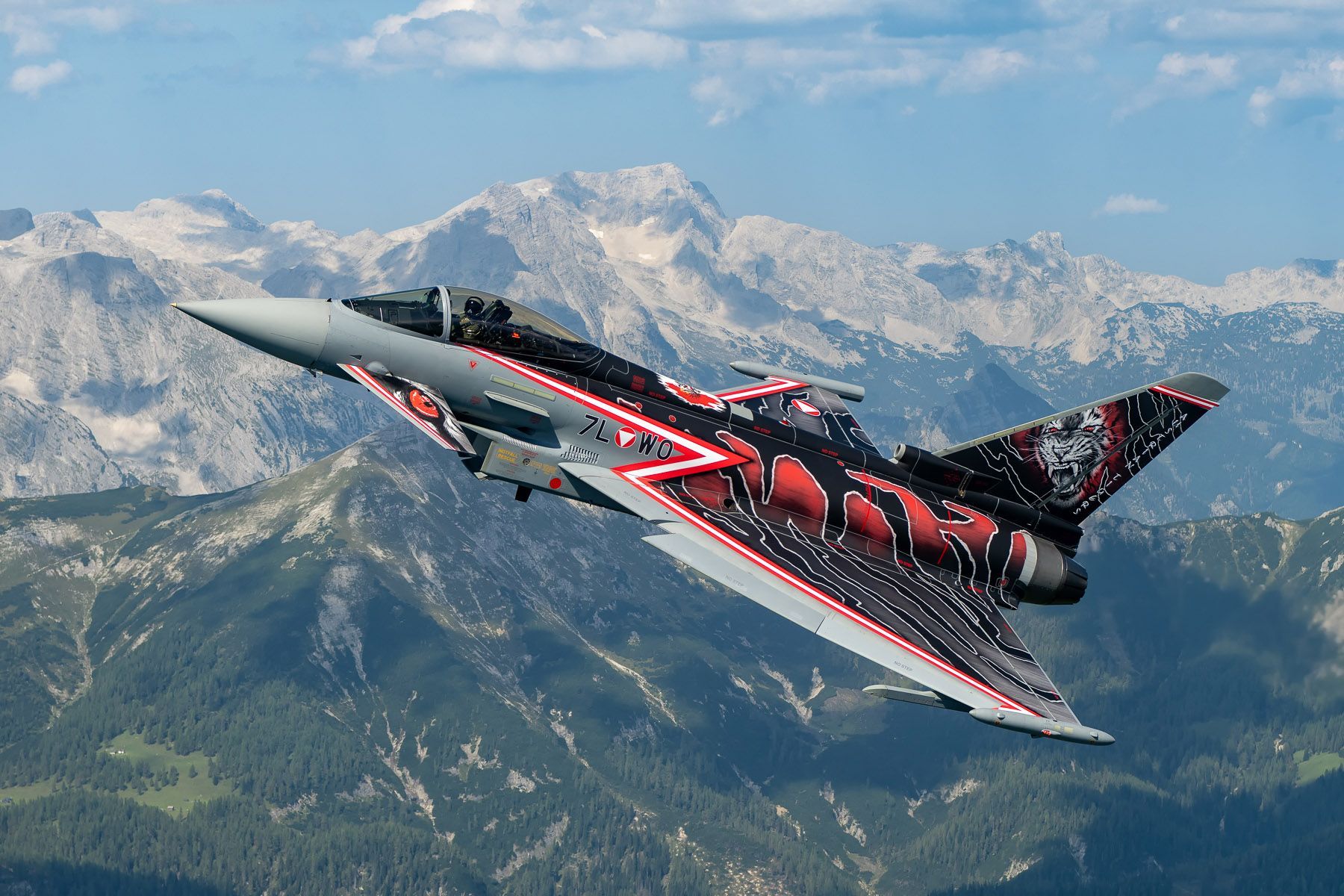
The Eurofighter story
When referring to Austria, Eurofighter and controversy have often been used in the same sentence from almost immediately after the decision was taken to buy them.
At the turn of the century, air defence was conducted by the air force’s two dozen Saab J35Ö Drakens, refurbished aircraft obtained second-hand from Sweden (more info on these and more previous Austrian fighter aircraft is mentioned by the end of this article). As the Drakens were rapidly approaching the end of their operational life, a successor was evaluated. Within the light of long-standing defence cooperation between Austria and Sweden, Saab offered up to 30 new Gripens (24 JAS 39C and six dual-seat JAS 39D) as a response to an Austrian Request-for-Proposal. A lease of twelve Gripens formed part of the deal to act as an interim solution between Draken retirement and the arrival of factory-new Gripens.
Although Defence Minister Scheibner favoured the Saab deal while the Finance Minister apparently preferred the Lockheed-Martin F-16, the Austrian Council of Ministers announced the selection of the Eurofighter on 2 July 2002. Bundeskanzler Wolfgang Schüssel declared Eurofighter being technically the best solution for the future.
Barely one month later, Central Europe suffered from severe and catastrophic flooding, resulting in estimated damages of approximately €3 billion for Austria alone. These expenses subsequently were the main reason to reduce the planned fighter order from 24 to 18 aircraft. A contract worth €1.959 billion was signed on 21 August 2003 for Tranche 2 aircraft. These would represent the same standard as the first German air force’s aircraft in this acquisition batch.
More clouds soon appeared on the horizon. Due to a suspicion of irregularities, a majority in parliament agreed to set up a committee of inquiry in October 2006 on the Eurofighter deal. The socialist SPÖ party announced that the deal was way too costly for them and felt the country did not need these expensive aircraft. One month later, Eurofighter GmbH responded that cancellation costs would be as high as €1.2 billion as the production of the aircraft destined for Austria was already well underway.
In January 2007, political parties ÖVP and SPÖ had formed a new coalition that announced a renegotiation on the deal would be started for a more cost-favourable solution, since complete cancellation without a significant price tag proved to be impossible. Meanwhile, the first Austrian Eurofighter made its maiden flight on 21 March 2007. This aircraft registered 7L-WA (airframe AS001) was built as Block 5, according to the latest standard built under the Tranche 1 series. Airframe AS002 was also about to roll out while AS003 to 006 were on the final assembly line in Manching, Germany. Also at that stage, AS007 to 018’s main components were already in production with the last one planned for delivery in 2009. Furthermore, the training simulator had been installed at Zeltweg.
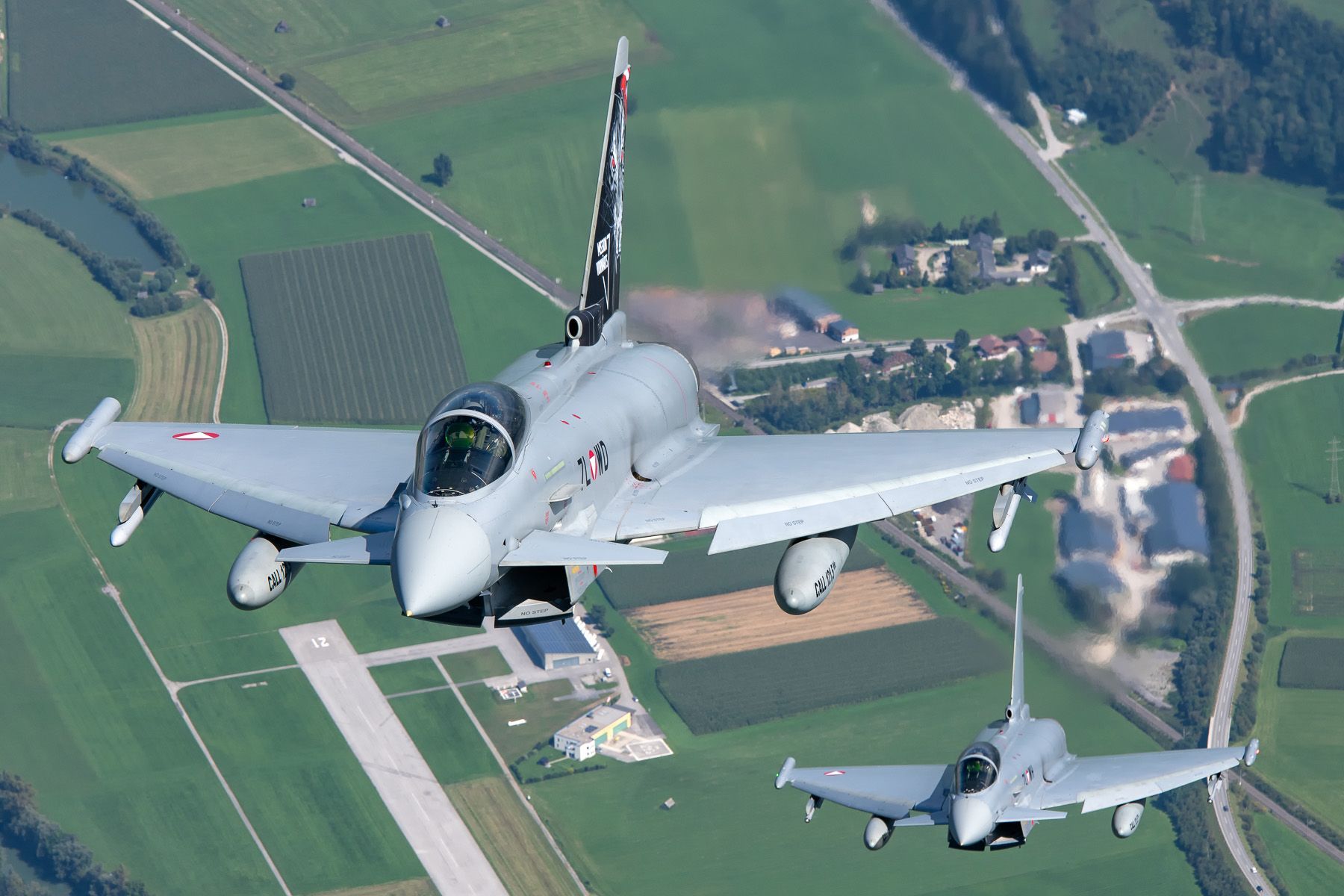
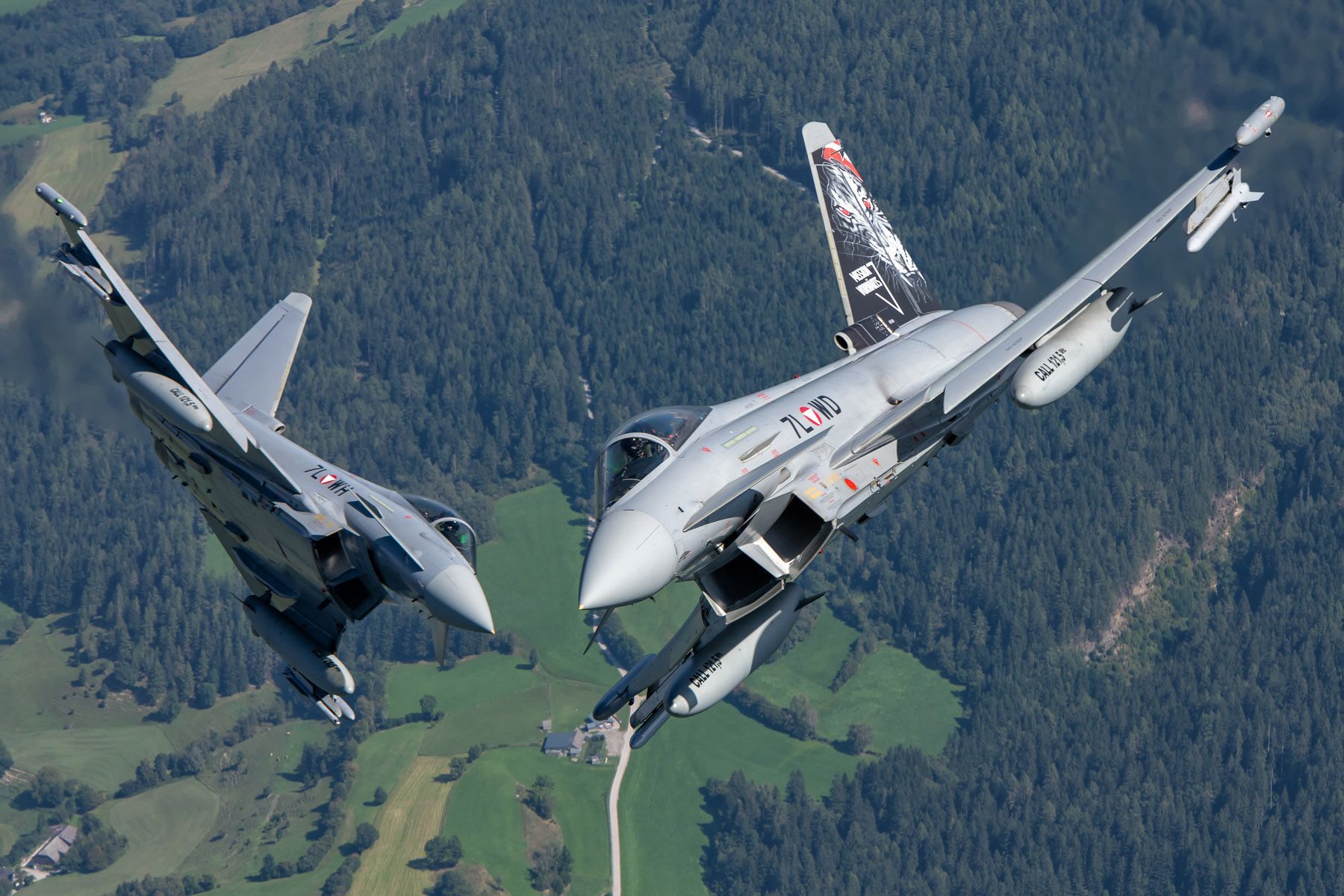
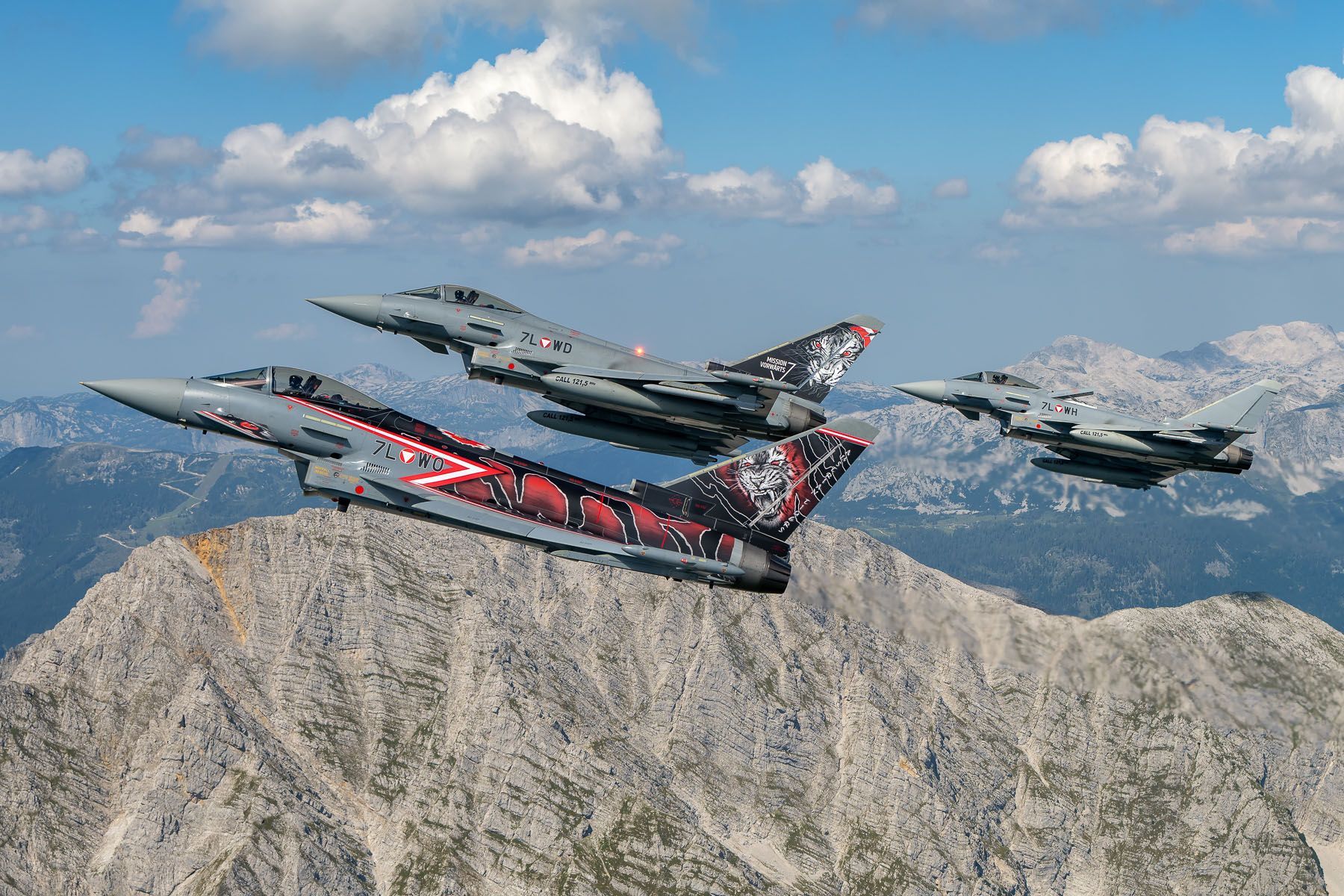
New deal
On 26 June 2007, the Eurofighter consortium and the Austrian government represented by Defence Minister Norbert Darabos reached a revised agreement, reducing the price by some €370 million. Instead of 18, only 15 aircraft would now be delivered, being all Tranche 1 instead of 2. The first six were Block 5 aircraft of which deliveries were about to commence. Three more were also new-built Block 5 aircraft that were redirected from the German Tranche 1 order. The final six were used, low-hour German Luftwaffe Tranche 1 airframes, all Block 2B standard. Before delivery, all would receive the so-called R2 upgrade, bringing them to the same standard as the previous nine. In the end, the Luftwaffe certainly got the better end of the deal, as in compensation for the transfer of their Tranche 1 aircraft, they received nine Tranche 2 originally destined for Austria, even assigned Austrian airframe numbers (AS0007 till AS0015). The fact that the first three of these still lack a full DASS system at present probably won’t spoil the fun.
The downgrading in numbers and configuration standard was not the whole story. Also, the aircraft’s Praetorian DASS (Defensive Aid Sub-System) for essential self-protection was significantly downgraded while the addition of the PIRATE IRST (InfraRed Search & Track) sensor was cancelled to further cut costs. The renegotiated deal would now cost €1,589 billion, a reduction of almost 20 percent. However, ending up with fewer aircraft that were also less capable, the reduction would be nullified according to several experts highly criticising the revised contract.
Shortly after the new deal was announced, 7L-WA was delivered on 12 July 2007. On 1 July 2008, Eurofighters formally took over the air surveillance role over Austria. This allowed the return of the leased Swiss F-5Es that were used as a stop-gap measure since 2004. On 21 July 2009, a milestone was reached by logging the 1000th flying hour with Austrian Eurofighters.
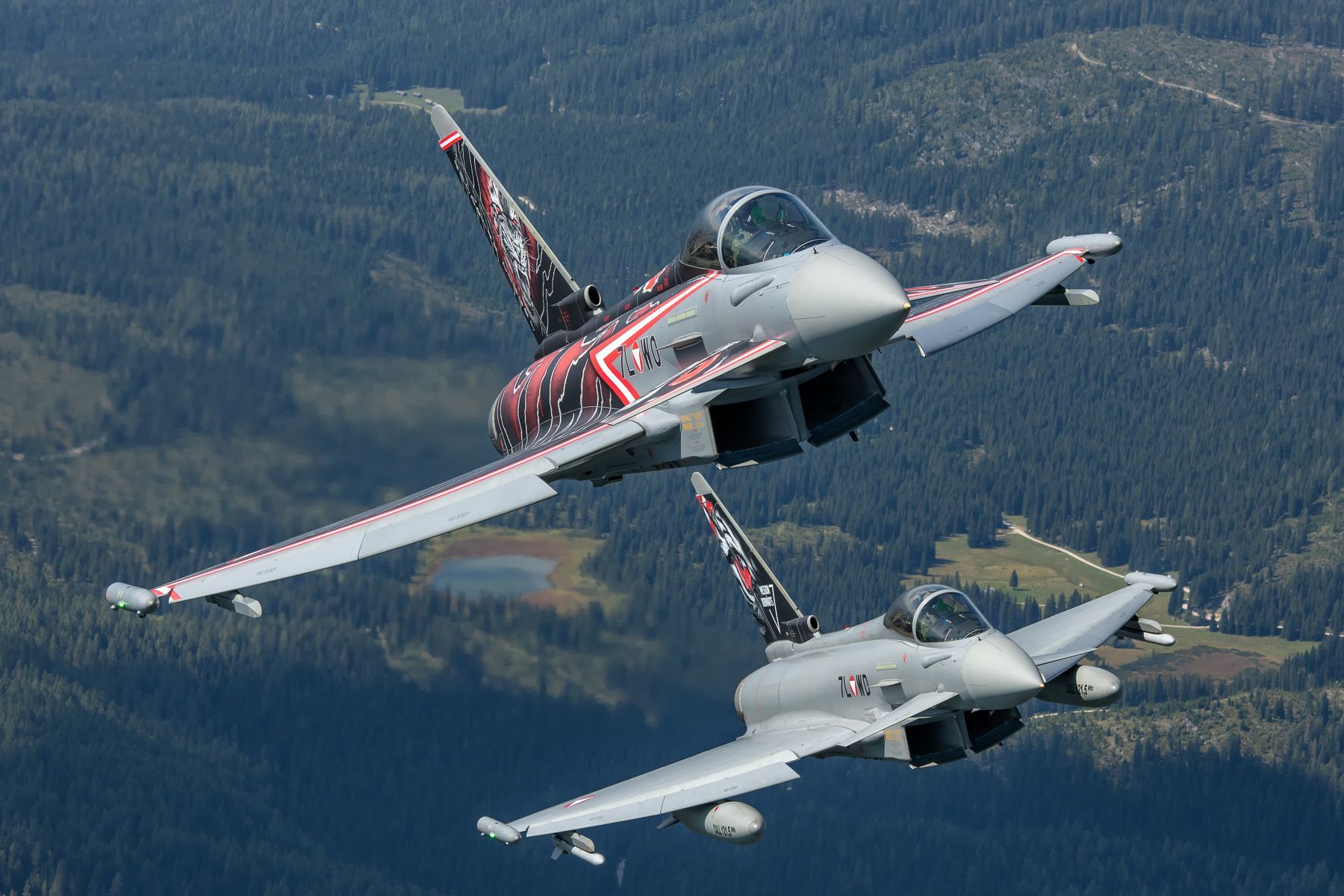
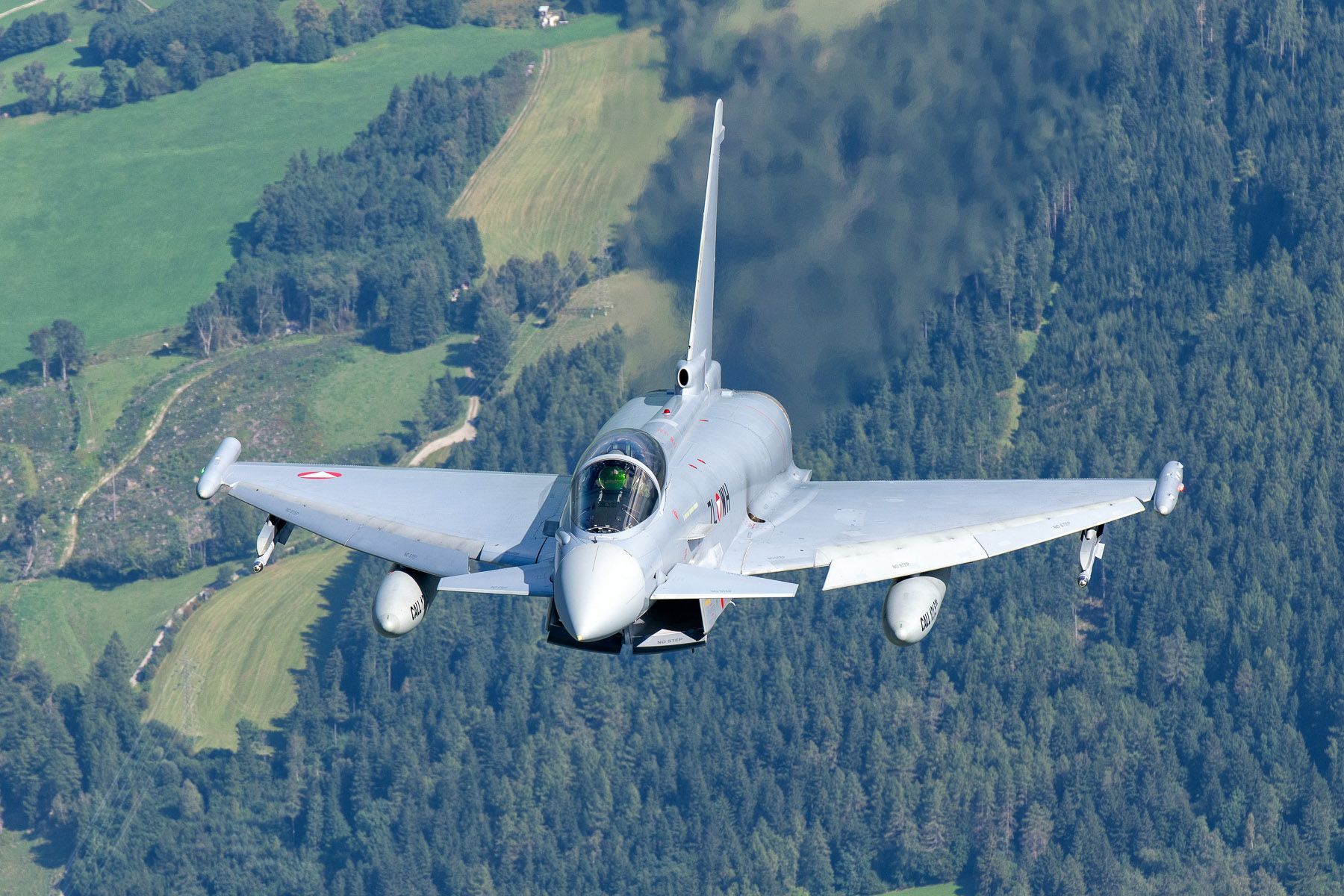
Dire Straits
To stay with Alpine terminology, Eurofighter matters continued downhill from the start. While fortunately no aircraft have been lost to date in accidents, a minor mishap occurred on 16 February 2010. After solving an issue with an unsafe gear indication, a Eurofighter landed safely but the deployed arrestor hook slammed into the aft fuselage upon touchdown. This caused not only some damage, but the incident also sparked some more political bashing. Though unrelated to the emergency landing, only five of 15 Eurofighters were apparently serviceable with the rest being acting as spares donor due to an inadequate spare supply by the manufacturer.
Then in November 2012, a corruption scandal was reportedly exposed following a police raid to the home of a certain Austrian individual, whose companies were involved in the Eurofighter deal. A shadowy structure with numerous shell companies to cover money transfers was discovered, and like before, bribes to Austrian officials to get the deal through were suspected and researched.
Another issue was the very limited amount of qualified Austrian fighter pilots. By 2014, only twelve pilots were licenced to fly Eurofighters. With more cuts to the defence budget, the number of Eurofighter flying hours – reportedly costing some €70.000 each – were limited to actual QRA assignments and daytime missions only. The limited and costly operation of the fleet prompted Defence Minister Hans Peter Doskozil to announce in July 2017 that he planned to prematurely retire the Eurofighters and to replace these with either acquiring or leasing a cheaper alternative.
As the ÖVP-SPÖ coalition fell later that year, his plans were put on hold. However, the Eurofighter would remain in dire straits. In December 2018, the Austrian government was debating the future of the entire air force. Focusing on Eurofighter, both a sale of the aircraft and keeping the fleet altogether were considered as options. Meanwhile, the legal battle with Eurofighter continued over the alleged bribing fraud. Two earlier investigations had forcibly been ended for political reasons, but a third was underway. In April 2020, this last investigation was ended by court order, and on 13 November 2020 all previous Eurofighter-related fraud investigations were permanently relocated to the history section.
Nevertheless, Austria was still keen to get rid of their expensive aircraft. Indonesia grabbed their chance to get a hand of them, as on 10 July 2020 they forwarded an official letter requesting to buy all 15 Eurofighters. Soon after, the Austrian Ministry of Defence directed the General Staff of the armed forces to prepare negotiations with the Asian country. Because this deal was criticized in Indonesia since in the opinion of some local experts the aircraft were considered obsolete, the transfer never materialized.
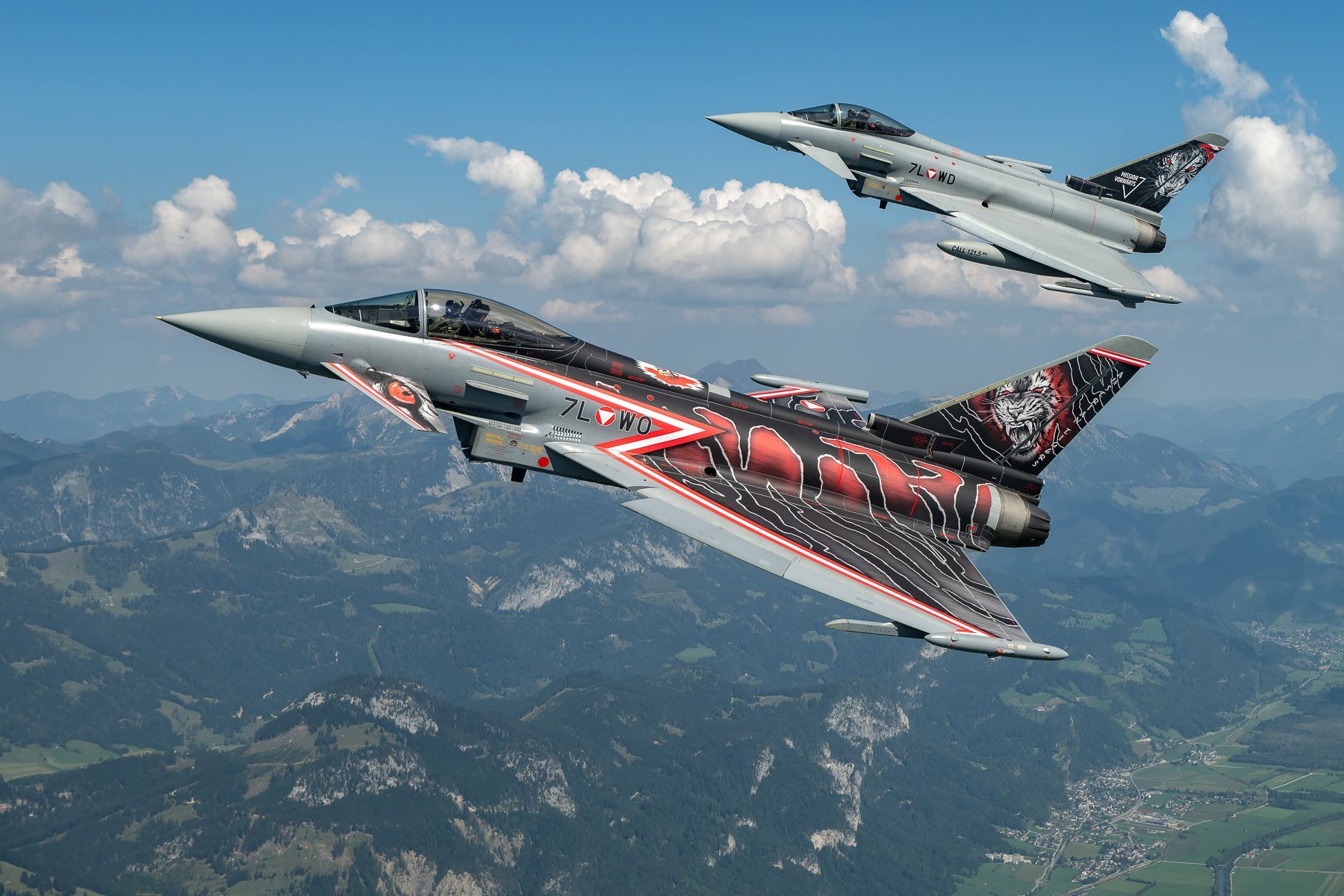
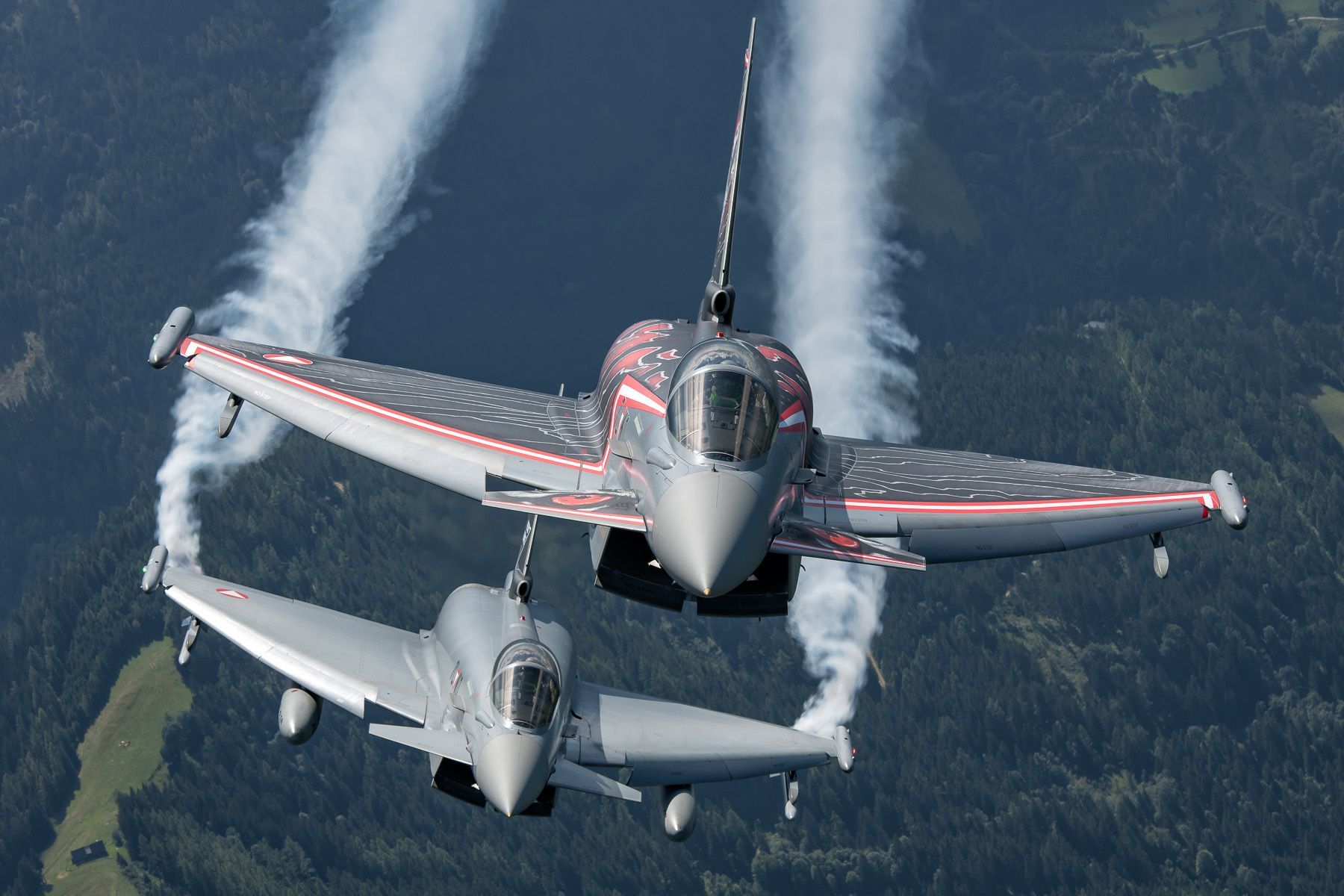
More funding
With a changing geopolitical global situation, tables slowly started to turn in view of the Austrian approach towards their military capabilities. On 7 October 2020, the Austrian Ministry of Defence made a bold announcement that a budget of no less than €16 billion would be available until 2027. These funds were meant to buy a number of fifth-generation fighter aircraft to enter service after 2030, as a replacement for the Eurofighters. Austria might eye the Lockheed-Martin F-35 Lightning II, but such an acquisition needs approval by the United States under the Foreign Military Sales conditions.
Beside having an eye on new trainer aircraft with a possible light combat capability, Defence Minister Klaudia Tanner also announced plans to acquire new systems for the Eurofighter, particularly those that were abandoned in the 2007 renegotiation deal. These upgrades include beyond-visual-range (BVR) missiles such as AMRAAM; upgrading the degraded DASS system; and night combat systems. These modifications are deemed necessary to keep the aircraft in service in an efficient manner, and of course imply that an early retirement of Eurofighter is now finally off the table. Beside the upgrades, Tanner announced in October 2022 that she would like to acquire three second-hand Eurofighter dual-seat aircraft from the German Luftwaffe. The latter will retire their older Tranche 1 Eurofighters following the arrival of their new Tranche 4 aircraft that will be delivered from 2025. Adding some dual-seat aircraft would reduce training hours abroad, with the intention to cut costs. Currently, the whole Eurofighter conversion course is done with the Taktisches Luftwaffengeschader 73 ‘Steinhoff’ at Laage, Germany. Despite the intention, no deal to obtain used German aircraft has been officially reported until late 2024 following the announcement.

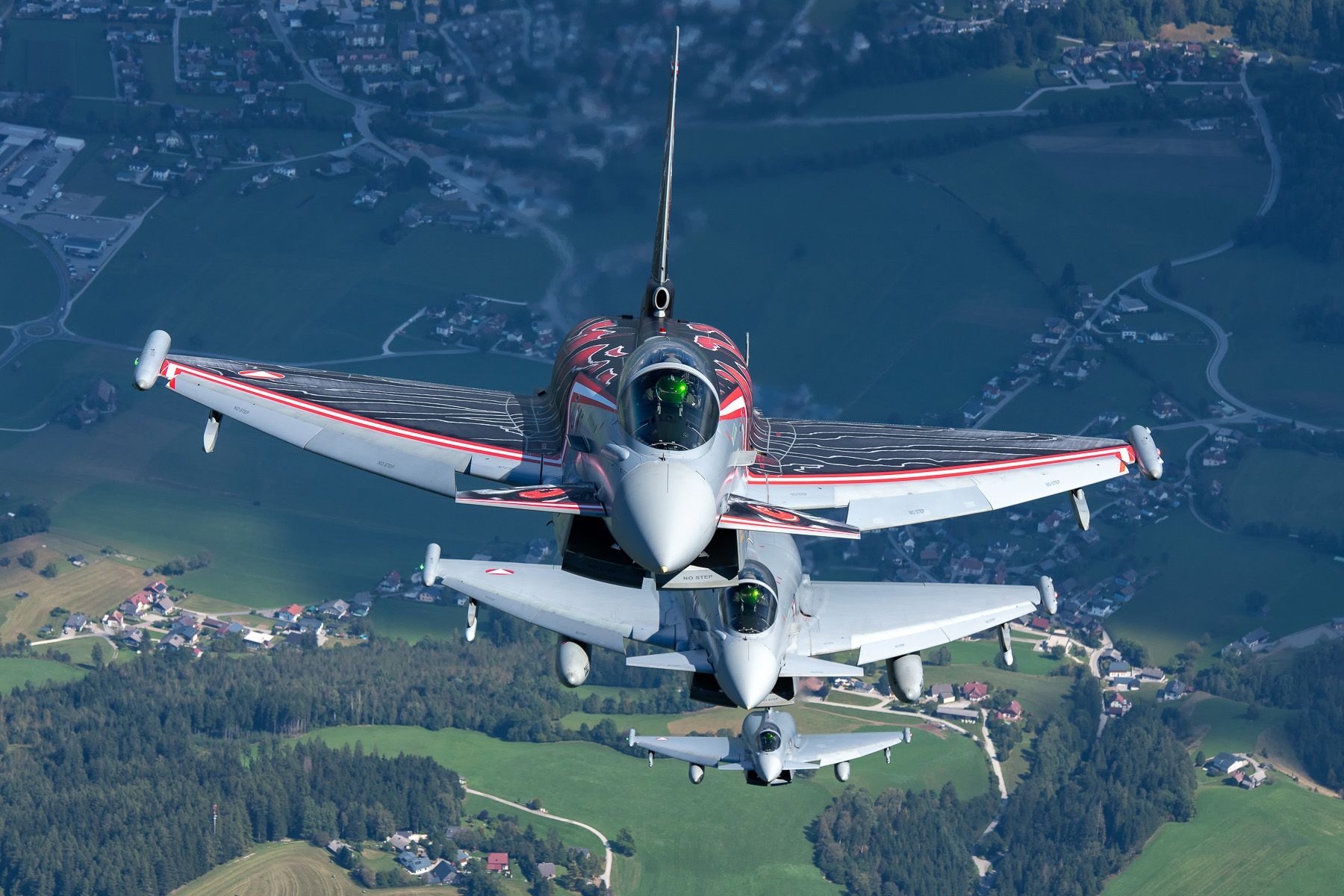
New equipment
All Austrian Eurofighters were updated with the service release proposal (SRP) 4.3 standard software and hardware by 2013. This update, carried out by Cassidian at Zeltweg, also covered new radio systems, GPS and the IFF transponder. As such, it is the latest and final standard for Tranche 1 aircraft although the announced upgrades might still boost the capability of the Austrian aircraft.
Currently, Austria plans to retire the Eurofighters no later than 2037. Any new type will have to be weighed against the requirements, ranging from the current air policing to new options like maintaining air superiority in case Austria is threatened from outside. As long as Austria is not joining any alliance such as NATO, most requirements will stop at its borders. Although Austria has expressed their interest in 6th-generation fighter aircraft, Saab's Gripen E offers a suitable, efficient and cost-effective alternative to fulfil Austria’s future air policing requirements. ■
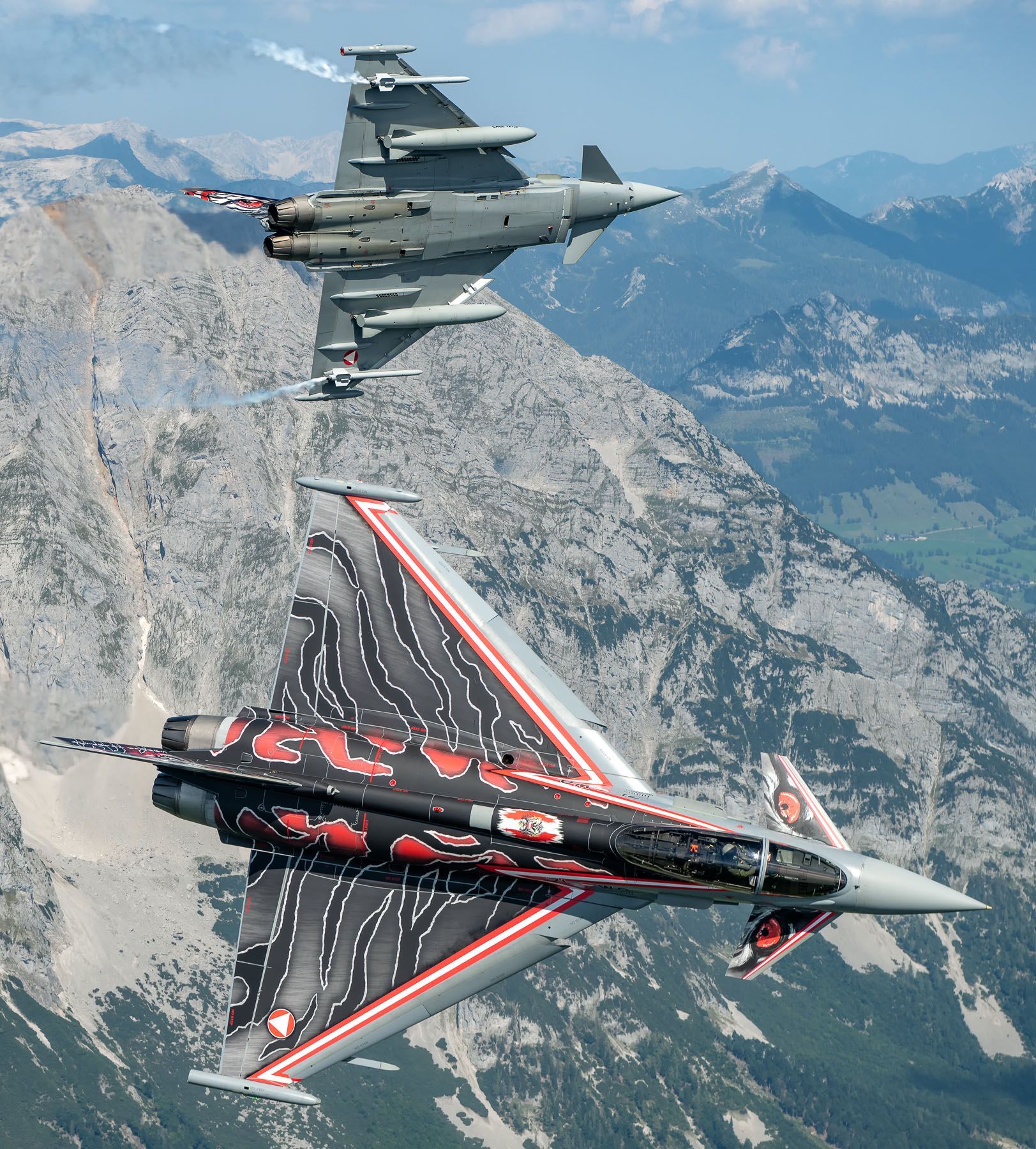
A brief historical overview on Austrian fighter aircraft
Following World War II, Austria re-established their armed forces in 1955. Initially equipped with light aircraft, helicopters and some jet trainers, it was not until five years later that combat aircraft joined the fleet. Between 1960 and 1962, 30 former Swedish air force Saab J29F Tunnan fighters were taken on charge to defend Austrian skies against intruders. A long-standing cooperation with the neutral Nordic country started, and in 1970 Austria received the first of 40 Saab 105Ö (locally also known as J105Ö). These were fitted with more powerful J85-17B engines and undertook a variety of roles within the Austrian air force, ranging from air defence, light ground attack, aerial reconnaissance and of course crew training, the very task it was designed for.
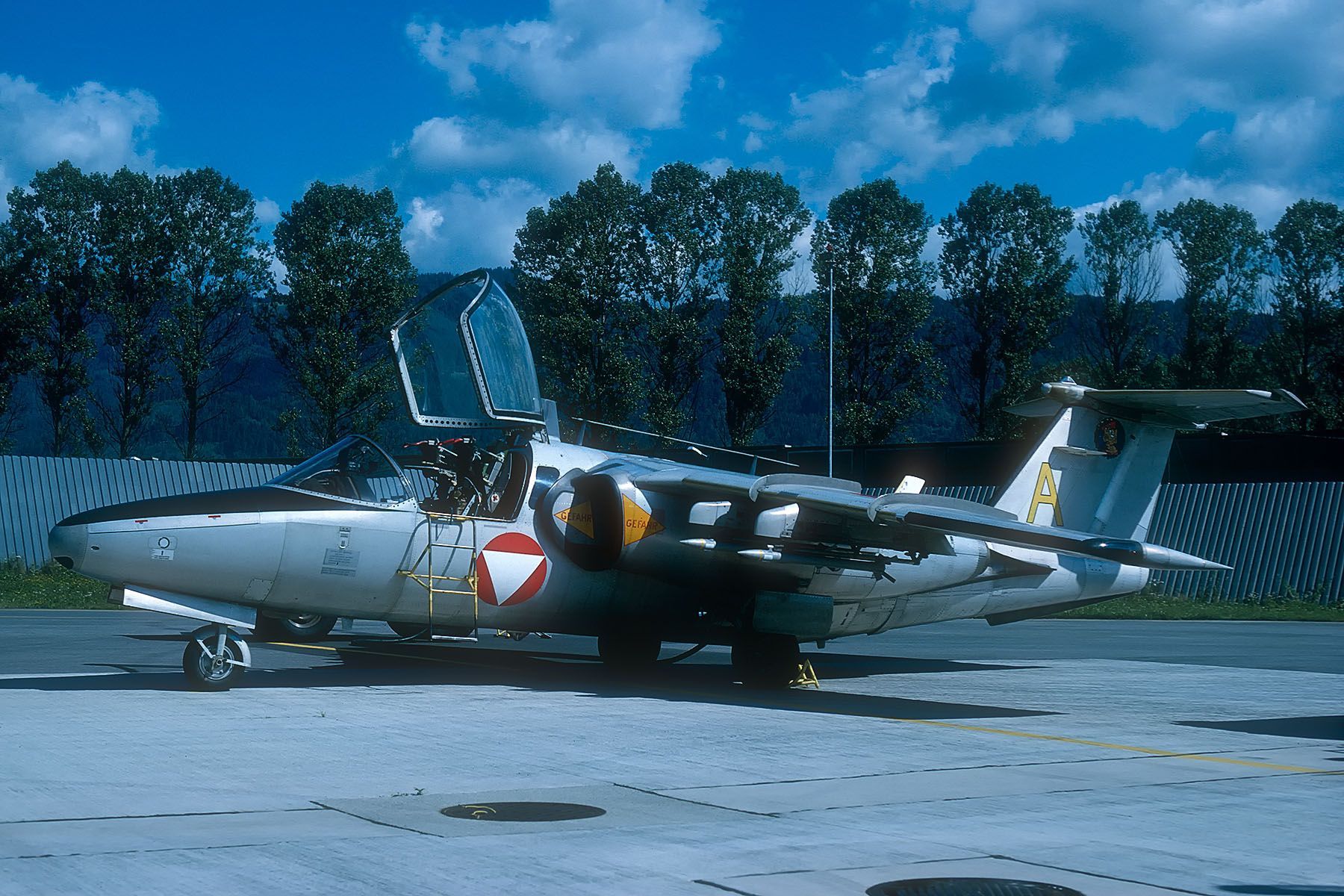
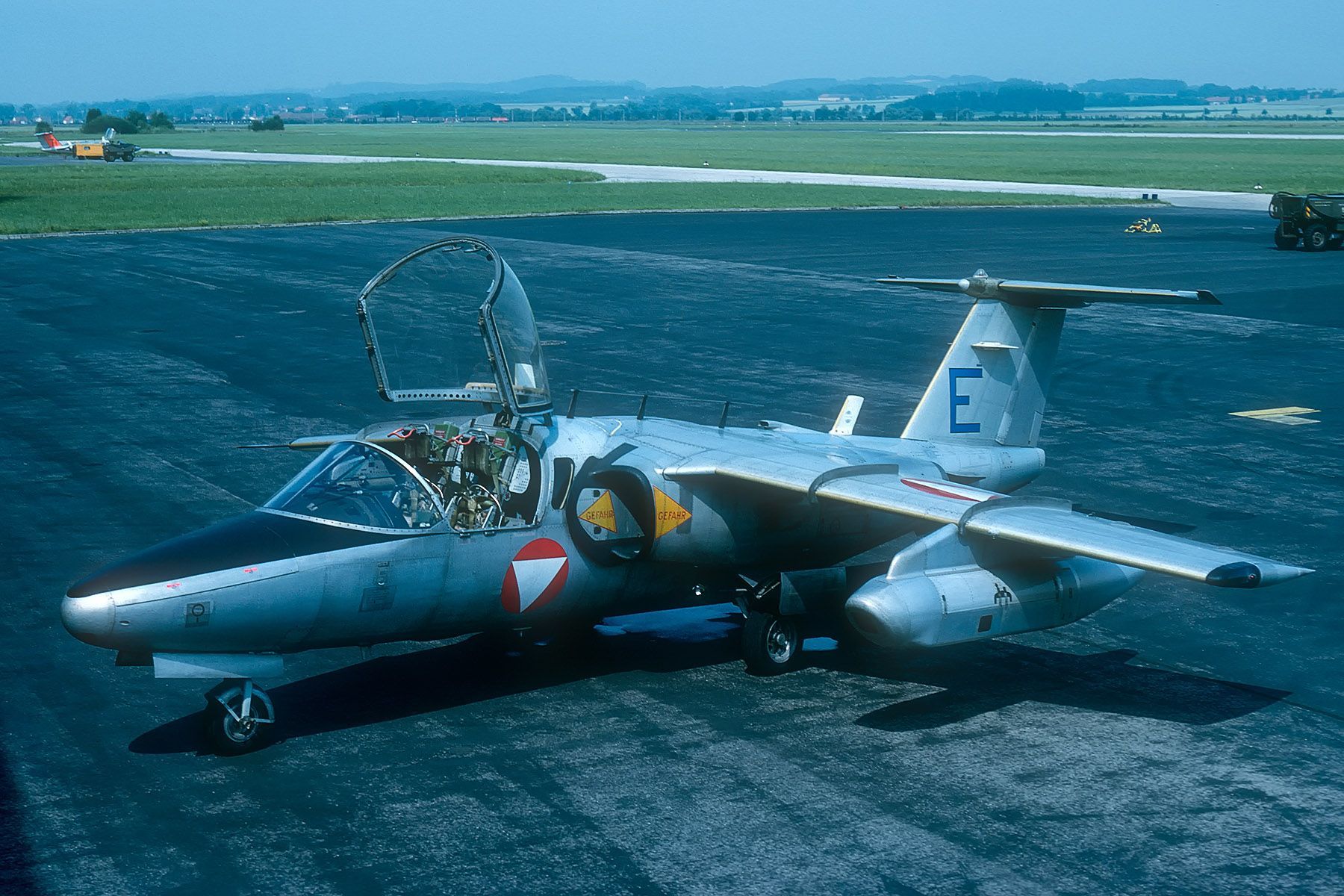
On 15 October 1976, the Überwachungsgeschwader was established to cope with the increasing number of Warsaw Pact aircraft straying the border. Although versatile, the Saab 105 was not really suitable for air policing. The long-awaited wish to get their hands on a more potent and supersonic platform came true in the late 1980s. Saab took 24 former Swedish air force J35D Drakens and modified these into J35Ö models. The aircraft were repainted in a two-tone grey air defence scheme and then delivered to the Überwachungsgeschwader, relieving the Saab 105s in the air policing role. Based at Zeltweg and Graz-Thalerhof, the Drakens were soon put on alert as in 1991 the war in former Yugoslavia broke out, with some aircraft violating the southern border. One MiG-21 was sighted over the city of Graz, and a Yugoslav MiG-21R landed at Klagenfurt on 25 October 1991 with a defecting Croatian pilot. Oddly, since only nine Draken pilots were available that summer, some Saab 105Ö armed with unguided 75mm rockets were on QRA duty to assist. The Drakens were then only fitted with their two 30mm Aden cannons, as AIM-9P3 Sidewinders were not available until 1994 following the relaxation of political restrictions against guided weapons.
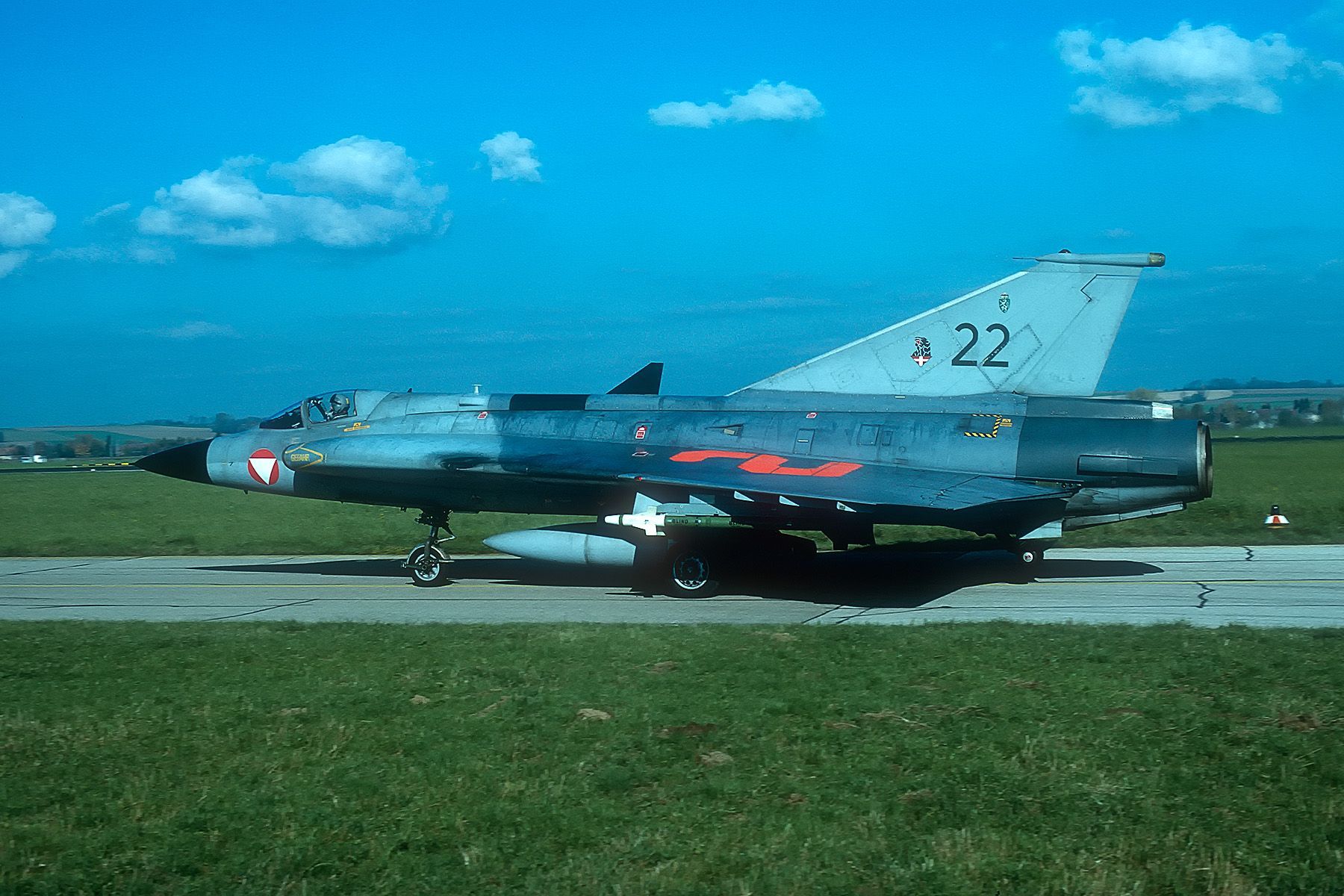
As the Drakens were refurbished to operate for 1,000 flying hours each, it was apparent that a replacement was required soon after the turn of the century. The selected Eurofighter would however not be available until around 2007, and with the Draken airframes reaching the end of their certified lifetime, a stopgap measure was needed. For this, Austria turned to neighbouring Switzerland as they had some surplus Northrop F-5E Tiger II aircraft available. A four-year lease contract for twelve aircraft was signed on 9 March 2004. The Tiger deal was estimated at €13.5 million per year and included armament, maintenance, training and logistic support at Graz-Thalerhof, the operating base and home of the 2nd Staffel of the Überwachungsgeschwader. After the conversion course of the first four pilots had been completed in Switzerland, four F-5Es were officially handed over at Fliegerhorst Nittner, Graz-Thalerhof on 9 July 2004, soon followed by the rest. For Austrian service, the Tigers received an extra VHF radio set as well as ILS equipment.
The last Draken was withdrawn from service on 22 December 2005. A reorganisation took place next summer, and the Überwachungsgeschwader that until then reported to Fliegerregiment 2 was placed under direct command of the Kommando Luftraumüberwachung.
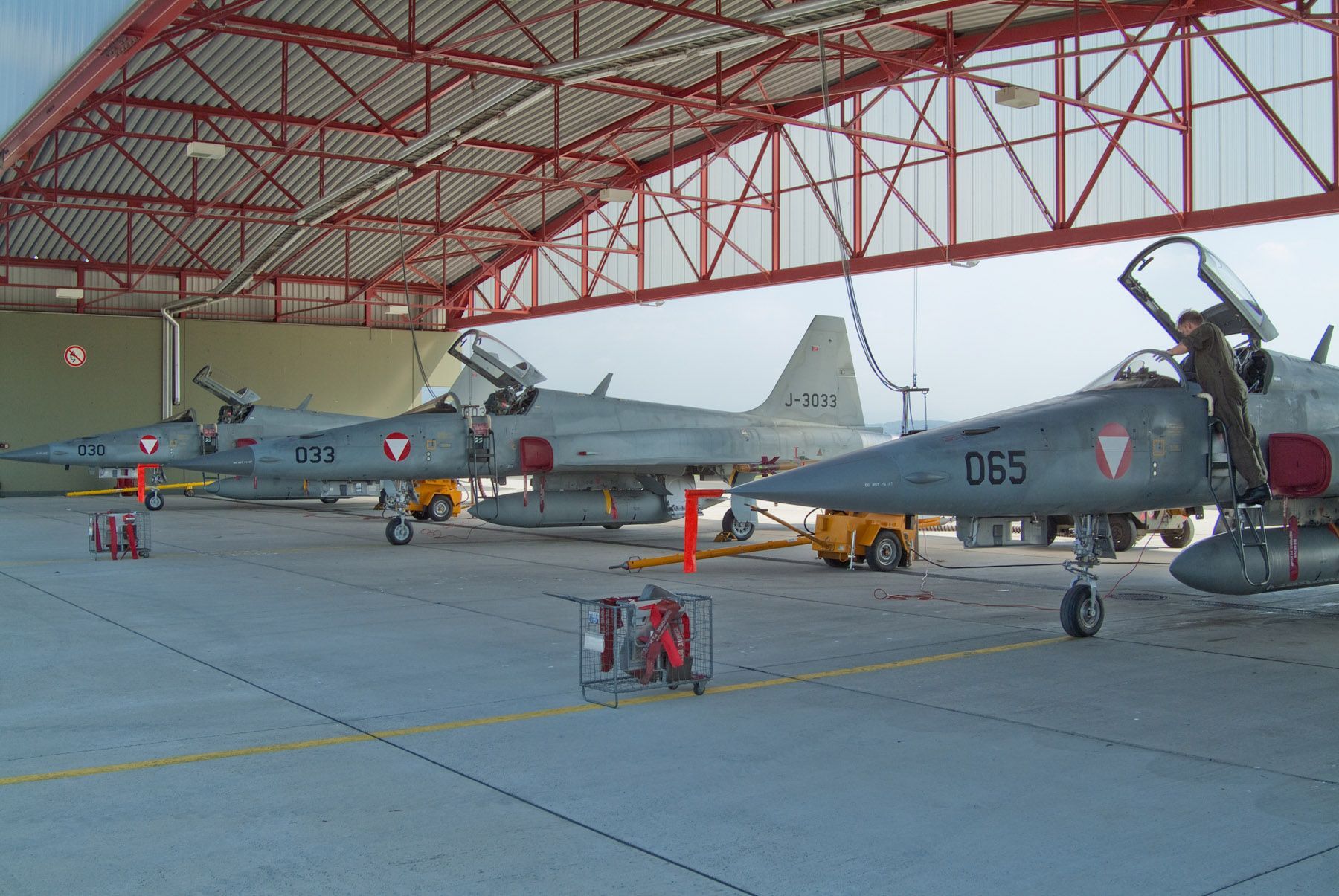
The Tiger contract was terminated mid-2008 as planned and the aircraft returned to Switzerland in quartets on 30 June, 22 July and 24 July 2008. The F-5 fleet logged some 5,000 flying hours in Austrian service. Ten aircraft re-entered service with the Swiss air force afterwards. Flight operations at Fliegerhorst Nittner were halted on 1 October 2008 as Zeltweg had now been renovated to become the main jet operating location. The base at Graz-Thalerhof was officially deactivated on 9 December 2013. ■
